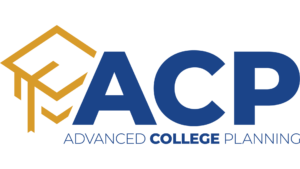Introduction: Planning Early = Stress Less Later
The college admissions process doesn’t start senior year—it starts now. Whether your student is a freshman just starting high school or a junior staring down SAT prep and college lists, timing is everything. From financial aid deadlines to scholarship windows, missing a key milestone can cost you big.
At Advanced College Planning, we believe families shouldn’t have to figure this out alone. That’s why we’ve created a detailed month-by-month college planning timeline covering freshman through senior year—with pro tips, checklists, and a free downloadable calendar to keep you organized at every stage.
Download Your College Planning Calendar
👉 Download the Free Planning Calendar (PDF)
Includes all major deadlines, FAFSA openings, SAT/ACT dates, scholarship alerts, and college application benchmarks.
Format: Print-friendly & mobile-accessible.
Month-by-Month College Planning Breakdown
Freshman Year: Explore and Lay the Groundwork
Fall – Spring
- Get involved in 1–2 consistent extracurriculars.
- Focus on building a strong GPA from the start.
- Begin exploring interests—career surveys, job shadowing, etc.
- Meet with your counselor to understand graduation and A-G requirements.
- Start a “college file” (Google Drive folder or binder) to track achievements.
Pro Tip from Advanced College Planning: Colleges love to see growth and depth. Stick with activities and build on them each year.
Sophomore Year: Academic Momentum & Early Discovery
September–December
- Take the PSAT/NMSQT for practice and scholarship prep.
- Continue rigorous coursework—consider honors or AP classes.
- Attend at least one college fair or virtual campus tour.
- Explore summer enrichment programs or internships.
January–May
- Talk to your counselor about your college track (are you on pace?).
- Build your resume: academic awards, club leadership, volunteer hours.
- Begin identifying interests: What majors might fit your strengths?
Advanced College Planning Tip: Start tracking your unweighted vs. weighted GPA. Many schools publish GPA benchmarks in their Common Data Set (CDS).
Junior Year: The Critical Prep Year
This is where planning becomes strategic.
August–October
- Create or update your college email and use it for all admissions info.
- Take the PSAT/NMSQT again—this one counts for National Merit eligibility.
- Begin prepping for the SAT/ACT—take diagnostics if undecided.
- Begin building a preliminary college list (target, reach, safety).
- Research impacted majors and prerequisites.
November–December
- Take your first official SAT or ACT (most students do better with practice).
- Start exploring scholarships like RaiseMe or College Board Opportunity Scholarships.
- Attend local college nights or webinars.
January–March
- Meet with a college counselor (like Advanced College Planning) to build a strategy.
- Begin identifying teachers for recommendations.
- Plan college visits for spring break and summer.
- Start working on a personal brag sheet or resume.
April–May
- Take second SAT/ACT attempt, if needed.
- Register for summer pre-college programs or academic camps.
- Finalize college list (10–12 schools: mix of reach, match, safety).
- Review Common Data Set (CDS) to benchmark your GPA/test scores.
Pro Tip: Build a testing timeline. Students often test 2–3 times. Deadlines matter!
Senior Year: Execute the Plan
August–September
- Finalize your college essay drafts (personal statement + supplementals).
- Request letters of recommendation.
- Register for final SAT/ACT retakes.
- Create accounts: Common App, Coalition App, UC Apply, etc.
October
- File your FAFSA as soon as it opens (typically Oct 1 or later depending on changes).
- Submit early action/early decision applications.
- Apply to local/regional scholarships.
- Upload documents to the CSS Profile (for schools that require it).
November–December
- UC and CSU application deadline: November 30 (no extensions!).
- Confirm all transcripts, test scores, and letters have been received.
- Submit any rolling admissions apps.
- Stay focused academically—first semester grades still matter.
January–March
- Submit regular decision apps by January 1–15 (varies).
- Apply for local scholarships—ask your counselor for a list.
- Review financial aid packages and compare offers.
April–May
- Decide and commit to a college by May 1.
- Submit housing deposits and orientation registration.
- Send your final transcript.
Advanced Tip: Once you’ve decided, thank your recommenders and notify other schools where you’re declining admission. It’s professional—and helps other students.
Visual Timeline Snapshot (Quick Reference)
| Month | Key Tasks |
| Sept (Jr) | PSAT, SAT prep, college list |
| Oct (Sr) | FAFSA opens, early apps |
| Nov (Sr) | CSU/UC deadline, final SAT |
| Jan (Sr) | Regular Decision apps |
| Mar–Apr | Financial aid offers |
| May 1 | National College Decision Day |
(See full visual on your downloadable calendar.)
Bonus Pro Tips from Advanced College Planning
- Use a family calendar: Sync key dates to your Google Calendar or planner.
- Check in monthly: Hold 30-minute check-ins with your student to stay on track.
- Use platforms like Scoir, Naviance, or CollegePlannerPro to stay organized.
- Build in buffer time for essays, testing delays, or missed deadlines.
Top FAQs About the College Planning Timeline
1. When should we start planning for college?
Ideally, freshman year—but junior year is the most critical window. That’s when academic records, test scores, and extracurriculars begin aligning directly with admissions criteria.
2. What if my student doesn’t know what they want to major in?
That’s perfectly normal. Use personality inventories (like YouScience), job shadowing, and electives to explore. It’s more important to develop strong academics and real interests than pick a major too early.
3. Are the SAT/ACT still important?
Yes, especially for merit aid and competitive programs—even at test-optional schools. Many admitted students still submit scores, so it’s wise to prepare and take the test at least once.
4. When should we visit colleges?
Start visits in spring of junior year. This gives your student enough context to evaluate campuses and narrow their list before application season starts.
5. What’s the most commonly missed deadline?
FAFSA and state aid deadlines. Many families wait too long and miss out on need-based or merit-based aid. File in October to maximize your eligibility.
Final Thoughts: Plan Ahead, Worry Less
A successful college application isn’t about last-minute scrambling—it’s about timing, strategy, and support. By following a clear timeline and breaking it down into manageable monthly steps, your family can reduce stress and make confident choices.
At Advanced College Planning, we walk alongside you—mapping out academic choices, test timelines, and financial aid plans so your student’s college journey feels exciting, not overwhelming.
Let’s Build Your Custom Timeline Together
Need help organizing your student’s timeline? Want a personalized checklist and college roadmap?
👉 Book a free consultation with us today
We’ll help you start strong—and stay on track.


